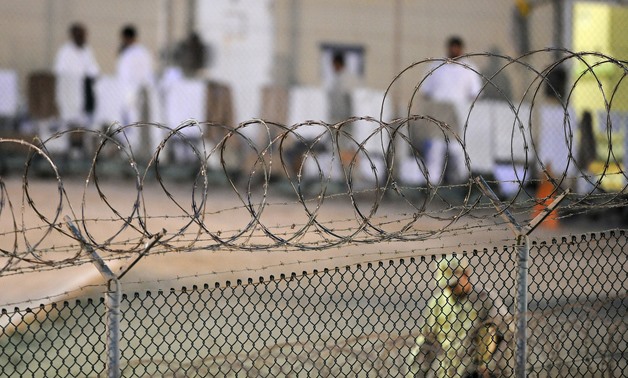
Guantánamo Bay Prison- Creative Commons Via Flickr Joint Task Force Guantanamo
CAIRO - 24 June 2017: Qatar’s embrace of terrorism has been a phenomenon since the 2014 Guantánamo Bay exchange.
In May 2014, the Obama Administration exchanged five high-ranking Taliban prisoners from the US military prison of Guantánamo Bay, for US soldier Bowe Robert Bergdahl who was imprisoned in Afghanistan.
Guantánamo Bay was set up to hold foreign suspects of terrorism captured after US-led forces invaded Afghanistan to expel al-Qaeda and its Taliban protectors in response to the attacks of September 11, 2001
At least five of the former Guantánamo prisoners are believed to have ended up in Qatar, which is well-known for allowing Islamist terrorist groups to flourish and develop within its borders, reported QatariLeaks. Most, if not all, of the five former prisoners are affiliated to Taliban, website added.
“Qatar has certainly failed in its obligation to sufficiently monitor the activities of the five Taliban prisoners from Guantánamo,” Executive Director of Counter Extremism Project (CEP) David Ibsen told Breitbart News on June 15, 2017.
The CEP is a non-profit, non-partisan, international policy organization that works to combat the growing threat of extremism and extremist ideology, as stated on the project's official website.
"They live in Doha in comfortable homes all paid by the Qataris, who are generally nice people," Doha-based Afghan businessman Zadran Darwesh said to BBC News on June 22, 2013.
Darwesh continued that Taliban's preferred venue was Qatar because “they consider it a neutral location, they see Qatar as a country that has balanced relations with all sides and has a prestigious status in the Islamic world.”
Ibsen then clarified that Qatar signed a memorandum of understanding (MOU) with the US, obligating Qatar to monitor the Taliban Five; in a Congressional Research Service research paper conducted in 2014, it was stated that the US signed MOU with Qatar, detailed the specific security measures that would be undertaken and enforced “if any Taliban detainees were transferred to their custody.”
This MOU included specific risk mitigation measures and commitments from the government of Qatar, like travel restrictions, monitoring, information sharing and limitations on activities, as well as other significant measures.
“Qatar is one of 59 countries to which detainees have been transferred from Guantánamo,” stated a report published on New York Times website.
Five of the Taliban Jihadists were transferred in 2014, while the sixth one moved to Qatar in 2008, according to New York Times report.
Beside the former six prisoners, there is a seventh who was also affiliated with both Taliban and al-Qaeda called Abdul Salam Zaeef, who, as Ibsen noted, has been working and operating in Qatar since 2011.
Earlier in 2011, Qatar reportedly spread the notion of allowing the former Taliban official, Zareef, to act as the “the political address” for Taliban in Qatar, mentioned one of New York Times articles.
On another note, Daily Mail website reported that Qatar agreed to temporarily extend a travel ban over five of Taliban prisoners released from Guantanamo Bay exchange. This ban had been made until “diplomatic talks for a longer-term solution are completed.”
“Five of the seven former Gitmo detainees transferred to Qatar remain sanctioned by the United Nations and other governments and inter-governmental organizations,” the CEP director told Breitbart.
The Taliban launched an official office in Doha, CEP director added to Breitbart.
Reported by Reuters in 2015, Qatar delegates agreed during an unofficial two days meeting with Taliban representatives, Afghan government figures and U.N. representatives “that the Taliban should re-open a political office in Doha.”
“The Taliban has referred to the office as the only entity where Taliban negotiations are authorized to take place,” said Ibsen.
Earlier in March 2015, at least three of the five Taliban terrorists, who were swapped with the one US soldier, tried to re-join the ex-terrorist networks, a US official revealed on the QatariLeaks website.
As reported on both QatariLeaks and Breitbart websites, Ibsen said that “Doha might have used the returning former Guantánamo prisoners for jihadist activities that included members of the Taliban movement who were exchanged for the Bergdhal in May 2014.”

Comments
Leave a Comment